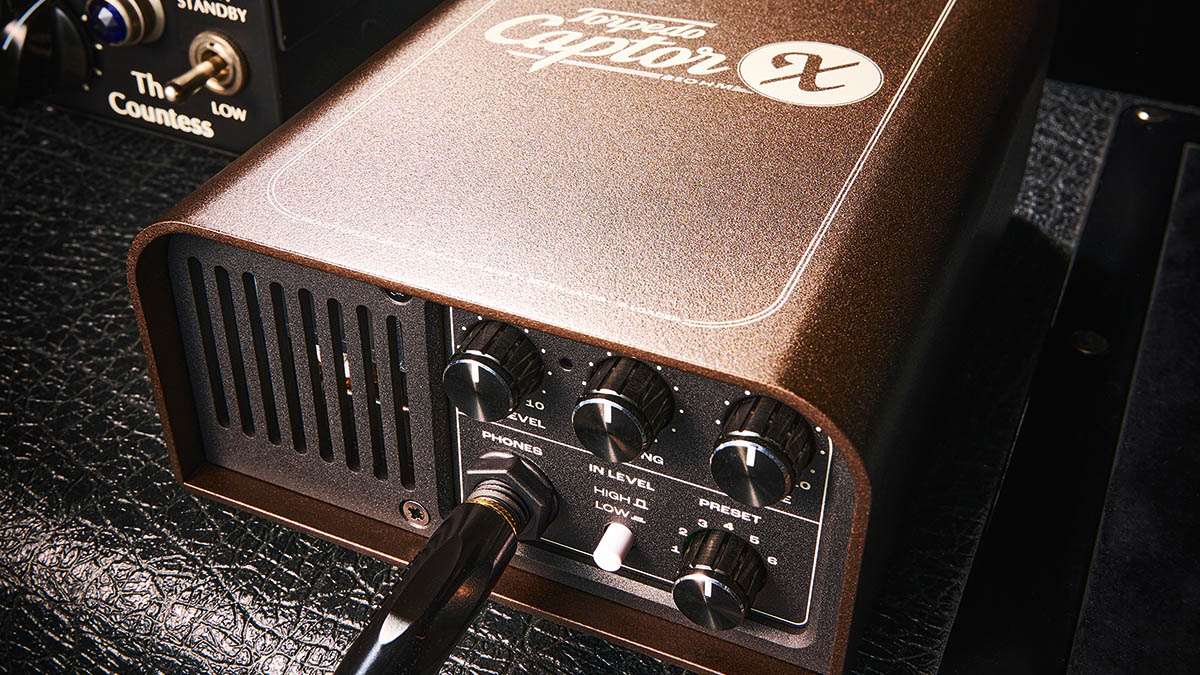Guitar World Verdict
If you need to give your amp a lift, especially if you’re after vintage cabinet tones, the Two Notes Captor X SE might have your name on it.
Pros
- +
Vintage-flavoured version of industry standard digital load box.
- +
Tempting choice of virtual cab models and presets.
- +
Torpedo Remote app.
Cons
- -
A little pricey (but you get what you pay for – it’s a class act).
You can trust Guitar World
While the digital revolution continues to advance, it’s also true that not every guitarist wants to give up their prized tube amp. Fortunately, there are ways of giving even the most vintage and basic valve circuits a new digital lease – and a very effective method is to use a load box.
One of the best out there is the well-known Captor X from French company Two Notes, whose DynIR system is practically an industry standard. To celebrate its 15th anniversary, Two Notes recently released this special‑edition, the Captor X SE, which is even more tempting.
It certainly adds some vintage mojo to the standard model, with a brown enamel finish surrounding the metalwork and a warm amber grille light. On the front panel there’s a Volume control, a global Tone control and a control called Space, which widens the stereo sound field. These are joined by a headphones socket, a button switch to vary the input level and a rotary switch to choose between up to six onboard emulation presets.
On the rear panel, you’ll find speaker in and out jacks with a three-position level control switch and a stereo pair of balanced outputs on XLR, as well as a useful ground lift switch. Micro USB and 3.5mm MIDI jacks handle external editing and control.


The Captor X SE looks great in its limited-run colourway, but the eye-opener (or should that be ear?) is the superb quality of the DynIR presets, each one of which is equivalent to using 160,000 static IRs.
The Torpedo Remote app is a delight to use, with beautiful rendering and visual editing of the Captor’s virtual cabs and studio-grade effects. The realism of the virtual environments is stunning, creating in seconds what used to take many hours of studio time.
If any further temptation were needed, the vintage-styled Captor X SE comes with an all-new Anniversary Edition set of 32 matching vintage cabinet models and 10 more once you register, along with 20 presets curated by top session player and influencer Pete Thorn.
All the latest guitar news, interviews, lessons, reviews, deals and more, direct to your inbox!

Verdict
It may not be the cheapest load box available on the market, but when you add in the fabulous DynIR cabinet emulations and the stereo balanced outputs, this SE version is worth its weight in gold, adding digital flexibility and professional-studio sound quality to any valve amp.
Specs
- PRICE: $599 / £499
- ORIGIN: China
- TYPE: Reactive load box with built-in dynamic IR (DynIR) signal processing and effects
- MAX INPUT: 100W RMS into 8 ohms
- DIMENSIONS: 128 (w) x 175 (d) x 64mm (h)
- WEIGHT (kg/lb): 1.3/2.9
- CABINET: Alloy/steel
- CHANNELS: 1
- CONTROLS: Output level, voicing, space, input level switch, preset select switch, speaker out level control
- ADDITIONAL FEATURES: MIDI and USB connections, Torpedo remote control via Bluetooth app
- OPTIONS: Many extra DynIR cabinet packs available to registered users
- CONTACT: Two Notes Audio Engineering
Nick Guppy was Guitarist magazine's amp guru for over 20 years. He built his first valve amplifier at the age of 12 and bought, sold and restored many more, with a particular interest in Vox, Selmer, Orange and tweed-era Fenders, alongside Riveras and Mark Series Boogies. When wielding a guitar instead of soldering iron, he enjoyed a diverse musical career playing all over the UK, including occasional stints with theatre groups, orchestras and big bands as well as power trios and tributes. He passed away suddenly in April 2024, leaving a legacy of amplifier wisdom behind him.


